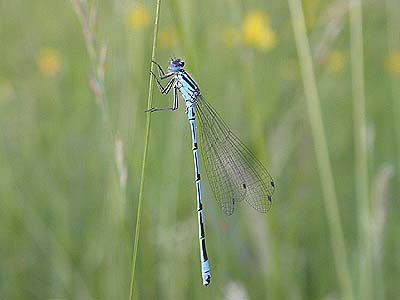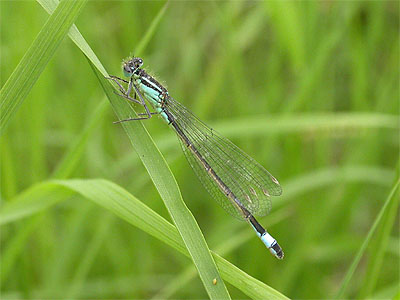

| The Dragonflies of Eakring | ||
| ... |
| The formation of Eakring
Flash has been instrumental in the encouragement of both
colonisation of several new Odonata species and the
spread of existing populations formerly restricted to the
Eakring Meadows area and (in particular) the Penny
Pasture Common pool. Most species are generally tied to these two sites. The larger hawkers and the darters however, can be met with virtually anywhere, even well away from the nearest water. Status of the area's Odonata species 2007 With it's perfect habitat, species' quick to become established at Eakring Flash were Black-tailed Skimmer and the Emperor Dragonfly. |
 |
|
| ... | ||
| The slow moving part of The Beck here, is also a favoured area with both species, along with the Beautiful Damoiselle which particularly favours the area near the bridge. Later additions have included Emerald Damselfly, Four-spotted Chaser and Ruddy Darter. The current list at the end of 2007, totals 15 species. | ||
| Banded
Demoiselle Calopteryx
splendens |
|||
| Emerald
Damselfly Lestes
sponsa |
|||
| Large Red Damselfly Pyrrhosoma nymhula |
|||
| Blue-tailed
Damselfly Ischnura
elegans |
|||
| A very common species found at all wet sites within the area, with Eakring Flash attracting the area's highest numbers. |  |
|
| Azure
Damselfly Coenagrion
puella |
|||
| Common
Blue Damselfly
Enallagma cyathigerum |
|||
| Southern
Hawker Aeshna
cyanea |
|||
| Brown
Hawker Aeshna
grandis |
|||
| Migrant
Hawker Aeshna
mixta |
|||
| Emperor
Dragonfly Anax
imperator |
|||
| Four-spotted
Chaser Libellula
quadrimaculata |
|||
| Black-tailed
Skimmer Orthetrum
cancellatum |
|||
| Broad-bodied
Chaser Libellula
depressa |
|||
| Ruddy
Darter Sympetrum
sanguineum |
|||
| Common
Darter Sympetrum
striolatum |
|||